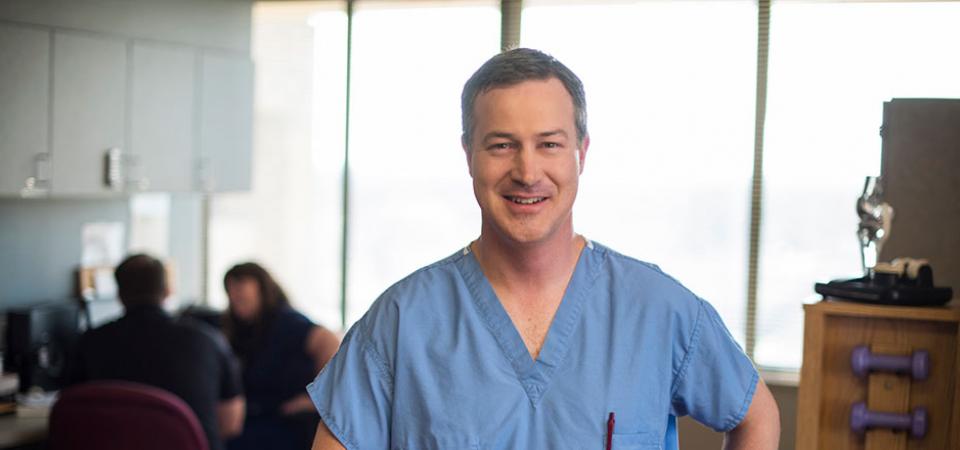Shoulder Pain and the Rotator Cuff
By Scott Stubbs, M.D.
The shoulder is the most highly mobile joint in our body. This mobility and unique function of the shoulder makes it a commonly injured joint during work, recreation, and every day life. The rotator cuff is involved in many of the injuries and disorders in the shoulder joint.
The rotator cuff is a set of tendons (tendons connect muscles to bone), which wrap around the head of the humerus to hold it secure to the socket. The purpose of the rotator cuff muscles and tendons are to provide security and balance to the shoulder joint. These muscles and tendons help rotate the arm at the shoulder joint.
The rotator cuff can be injured with a fall onto the arm. Commonly, rotator cuff injuries are the result of the arm being jerked overhead. The rotator cuff can also be injured when the arm is jerked downward. For example, a person carrying a heavy object that suddenly falls and pulls the person downward. This sudden downward traction on the arm could injure the rotator cuff.
The rotator cuff can also degenerate with age. If an individual engages in heavy work or recreational activities and has a growth of spurs around the shoulder, they may experience a pinching of the rotator cuff often referred to as impingement. This can cause a weakening and subsequent tearing of the tendon over time.
Common symptoms of rotator cuff injury are pain and difficulty raising the arm. Many people cannot lie on the affected shoulder and commonly report waking up at night with discomfort, especially if they roll onto their arm. It is painful for those with a rotator cuff injury to try and reach behind their body. Reaching outward becomes painful and a person notices weakness when trying to lift objects. They may experience difficulty lifting a milk carton out of the refrigerator. By attempting to move the joint a person may experience crepitus, a grinding noise from the joint. This noise may represent abrasion of the damaged rotator cuff tendon against the bony structures/spurs above it.
A plain x-ray can reveal subtle signs of rotator cuff disease and screen for other disorders of the joint. Other imaging studies are magnetic resonance imaging (MRI), arthrogram, and ultrasound. MRI is the most commonly used of these and can provide detailed visualization of the rotator cuff and other structures in question. These studies can be very helpful with diagnosis in select cases. In addition, other problems of the shoulder joint that can accompany rotator cuff injury and disease can be evaluated by MRI.
Following an acute injury, brief immobilization, medication, and physical therapy are often used to help provide relief of discomfort and to maintain motion of the shoulder. If a person has a poor recovery in the first three to several weeks following the injury, evaluation by a specialist may be indicated. Surgical treatment may be necessary for the rotator cuff injury. Many people of working age will require surgery to regain full function of the shoulder and to relieve the accompanying pain. Surgical treatment can also prevent future problems of chronic rotator cuff injury such as an arthritic shoulder joint.
A significant tear of the rotator cuff tendon will not heal itself and requires a repair, or suturing, of the tendon back into the correct position at its’ bony attachment. Most of these tears are repairable arthroscopically. Arthroscopic surgery is minimally invasive, utilizing small incisions (referred to as portals) to visualize and operate in and around the joint. This technique avoids much of the surgical trauma associated with larger “open” incisions which can contribute to increased pain and stiffness after surgery.
After rotator cuff surgery, a sling may be used for approximately four to six weeks. Physical therapy helps patients to regain motion early while protecting them from actively using the repaired cuff. Strengthening exercises usually start at approximately six to eight weeks following surgical repair once initial healing of the tendon to bone has occurred. A full recovery can take approximately four to six months depending on the rehabilitation and the physical demands placed on the shoulder. For example, an oil field worker may be away from his regular work duties for five to six months as compared to an office worker who may be able to return to restricted work duties within days to weeks. Once the repaired rotator cuff heals, normal to near normal shoulder function is usually restored.

